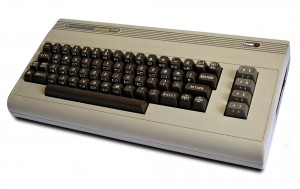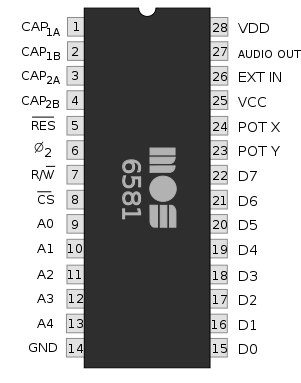this is an awesome performance by Dataline on the Elektron Octatrack sampler.
Most of the sound come from the OP-1 synth by Teenage Engineering.
www.dataline.bandcamp.com
www.projectdataline.com
this is an awesome performance by Dataline on the Elektron Octatrack sampler.
Most of the sound come from the OP-1 synth by Teenage Engineering.
www.dataline.bandcamp.com
www.projectdataline.com
Here is a cool video that shows the awesome capabilities of the Elektron Machinedrum UW used to make idm and glitch style music.
A great part of the job is focused on the control tracks that can play a morph on the instrument traks making the machine change in quite unpredictable way the programmed sounds.
IMHO this is one of the BEST video about the ELEKTRON MACHINEDRUM on the net!


An Elektron Monomachine “alone” song!
The Monomachine can handle very well the melodic and rhytmic duties together even with ony 6 note polyphony and six track sequencer…
The Monomachine is an interesting instruments not only for “classic” synth sounds but can even work as a 6 elements drum synth sequencer.
The Six machines are not a great restriction for rhythmic composing, as the beatbox on one track only can keep the rhythm busy, while I can synthetize kicks snares, percussions and cymbals on the other channels/machines.
In this post I want to examine the monomachine as a “kick generator”.
The best “Kick machines” are without any doubt the GND-sin and the EFM machines.
The best way to start is to genearate the SINE wave, with the envelope with the decay set to do a 808 type kick and hold and release at ZERO.
The first thing to understand it’s that the punch in the sound is given by the typical pitch sweep.
Faster is the sweep , harder is the punch.
So to make the pitch sweep you can use the LFO , set to TRIG , with the EXP wave, getting the right amountand the right Speed.
As you have created your kick sound , then applying the “dynamics” efx in neighbour mode (on the folloowing track ) and setting the compressor to work in a rude way with a high ratio, medium attack and short release you get the final punch to the kick.
This is a really interesting trick to control an analog synth with the Elektron Machinedrum.
The video and explanation is from the DARENAGER youtube channel:

Using the Machinedrum to drive a Korg MS10
1.Set up a GND-IMP machine and a GND-SIN machine, in global setting route each of these to their own output – I used E and F in this example.
2. For the GND-IMP machine set it UP to 0, UVAL to 0, DOWN to 64 and DVAL to 127, set the track level and volume to maximum. This will be your trigger pulse, so connect a lead from the output you assigned this machine to into the MS10 trigger input. (output E in my case)
3. For the GND-SIN set it at maximum level and volume, also turn DIST in the routing page fully up (127), set the RAMP and RDEC to zero. This will be your pitch control, route it from its output on the MD you selected earlier into the VCO CV input. (output F in my case)
4. Select accent track and set it to max for all steps and all tracks, it is important that you do this or it won’t work as the accent boosts the juice a bit.
5. Program some triggers for the IMP machine, then place triggers on the same steps for the SIN machine, using parameter locks on the PTCH control you can change the pitch played by the MS10, experiment with different envelope settings on the MS and different triggers for the IMP and SIN machines. As you can tell from the video, there are a few limitations with this technique, first the pitch is not linear and does not act as anything like normal scaling, second on the MS10 you get some bleed though of the SIN sound. If you are electronically minded it should be feasable to build a little circuit to boost the CV output a bit. You can also route the SIN to the V/OCT input or the filter CV input on the MS10, just remember to set the ENV/EXT knob on the VCO or VCF to a high setting or you won’t get as much modulation. This can yield some interesting sounds, have fun and experiment. If you use the V/OCT input you can change the base pitch by playing the keyboard on the MS10. This technique can also work with other synths or devices with CV inputs with varying degrees of success. Also you can use the LFO on the pitch of the SIN machine for some weird fx. I think that is everything, if I have left anything out let me know. Any questions let me know.
Cheers Daren

Commodore 64
The SID is a synthetizer chip built to give a “voice” to the classic home computer Commodore 64.
The sounds and music capabilities of the Commodore 64 were really ahead at that time, and everyone of us remember the tunes of tons of games played on the C64.

The SID (MOS6581)
The sound capabilities of the C64 were really appreciated by the demoscene movement during the 80s and early 90s, and even experimental electronic musician incorporated that sound in their compositions.
In the 90s a little synth manufacture started their businness building the first SID based synth, the SidStation.
The sidstation uses a single chip as voice generator.
When it first came out there was little interest in the machine, it was priced and sounded like a C64…
When people started hearing the sidstation sounds in pop or dance tracks understood the power of this little chip…
Today the Sidstation is a priced collectable piece of gear as they were made on a limited number (under 1000 units) and are out of production from years.
So the alternatives to get a midi controllable SID are a few…
The Sequencer is one of the most interesting parts of the Monomachine as it can control anything on the machine.
The sequencer works as a realtime or step (Roland TR-like) mode , and it can be switched record on or off with the sequencer running.
That’s ideal for live performance!
Programming notes is easy, if a midi keyboard is connected it can record from midi in , but it can be programmed standalone using the step sequencer buttons as they act as keys.
After notes programming the most useful things is the PARAMETER LOCKS programming.
A parameter lock is a motion sequence of a parameter.
It can be done on a single step (using step programming) or it can be recorded realtime turnig the knobs while the sequencer is running in realtime recording.
This function enables to modify extremely every nuance of the sound in a very easy way , and It’an effective strenght of the Elektron philosophy.
Applied to to a digipro machine , for example, it can create programmed wavesequences…
Applied to an envelope can morph the shape of a sound, from percussive to sustained…
Applied to a efx can for example vary the delay time and feedback…
Every thing in the machine can be controlled by the sequencer and the intensive use of parameter locks can create sound sequences really complex and even really difficult to recreate with another instrument.
The Monomachine is what I call THE unortodox synth concept in an alluminium box.
Everybody interested in innovative music machines knows the philosophy of the Elektrons, an easy and intuitive approach to manipulation/creation of sounds and sequencing, multi synthesis to have a extremely versatile palette of sound at your fingertips, a really good support from tutorials to fresh new O.S. often released to get more power from your machine.
The Monomachhine is structured as six digital monosynth with efx, arpeggiator and a 64 step sequencer track.
Every “monosynth” can be a synth , a efx processor or an audio in track (to process external signals).
So this box can generate, process and manipulate audio material all together in a really easy way.
Let’s get deeper into the machine…
MULTI SYNTHESIS
Every track can use one of the machine:
You can build a kit with a different machine on every track , so you can have a very versatile sonic palette of sound .
Every machine can do different things and even the oddest one (as the VO) can be really useful and amazing , when you use them with creativity.
The thing to keep in mind with the Mono is that it’s not a standard synth, it’s a Monomomachine!
Machines , usually, have only ONE oscillator, and this can be considered a great limitation, but it isn’t so.
If you want the machine to make detuned trance leads you have only to choose the Superwave SAW machine and turn up the unison and work with the detune and you will get a “supersaw” sound in few seconds…
If you’re searching for bells, the EFM machines are the best, choose the parallel and play with the knobs, you ‘ll get a bell sound as soon as you turn those knobs.
Considering the “Generator” part of the synth (oscillators machines) the MonoMachine is really versatile and easy but even a synth of its own kind, as for the other parts as filters, envelopes and modulations…
The filter section is composed by a really particular filter that act as a multimode.
You have:
In use I can say that it can cut the low freq turning up the base freq(highpass), cut the high freq turning down the width (lowpass), or can be a band pass using the base to chose the”freq” and the width choosing the “band”.
All in all is a very versatile filter that sound “elektron”, not a moog o roland replica/emulation, but it’s really rounded and acid, when you turn up the Qs, but it can even select the frequencies in a clinical way just to shape a minimal sound.
The filter does not have an auto normalization/headroom, this can give it that carachter, if you want a clean resonance you ha to turn down the “volume” or “distortion”(headroom) in the AMP page.
The AMP page is where we have the amp and volume settings and the particular AHDR env.
The reason this particular env was chosen by Elektron is because the Monomachine was born as a sequencer based machine so, the holod can take advantage of the sequencer way of thinking.
Apart from HOLD the other things are quite standard, as volume, pan, portamento.
The only parameter that really shape the armonics of the sound is the DISTORTION, that is the headroom.
A higher distortion doesn’t “grunge” the sound or add noisy harmonics, but saturate the signal making higher harmonics less evident getting a darker sound.
The EFX page is one of my favorite in the MonoMachine, they are not the classic delay /reverb, but Sample Rate Reduction, a parametric EQ and a delay.
As everything can be automatized with the “parameter locks” (this is the name in elektrons for the MOTION SEQ in the Korgs) you can have awesome results using parameter locks on SRR or delay parameters…
Last but not least the LFOs.
Lfos are the key to the monomachine together with the parameter locks, because there are 3 of them and everyone can modulate every parameter of the synth generator.
Imagine a modulated delay with a oscillating SRR… amazing!
to be continued…
stay tuned!